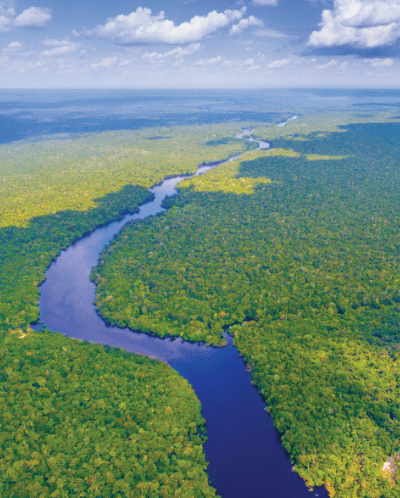Biodiversity in the Amazon Rainforest
The Amazon Rainforest is the biggest rainforest in the world. It is located in the northern part of South America and covers an area as big as Australia. Most of it is in Brazil. The Amazon River and thousands of other smaller rivers flow through the rainforest. The Amazon River is about 6,400 kilometres long and it is the second longest river in the world. It starts in the Andes Mountains in Peru and flows to the city of Belem on the Atlantic coast. This amazing river is sometimes called the “ocean river” because ocean ships can travel nearly two-thirds of it. In some places the river is about 50 km wide. The Amazon rainforest is often called the “lungs of the world” because it produces 20% of the world’s oxygen. It rains a lot, too. About 2.75 metres of rain fall each year and the temperature never goes below 25oC. The Amazon has the highest biodiversity of any place on the planet. For example, one small lake in the rainforest has more species of fish than all the rivers of Europe and a national park has more species of birds than all of the United States. In 1,000 square metres of rainforest there are 750 species of trees and 1,500 species of other plants. When the first Europeans came to the Amazon in the early 16th century, about six million Native Americans lived there. Today they are only about 250,000. Moreover, the entire Amazon Forest is in danger because people are cutting down the beautiful tropical trees for wood.

